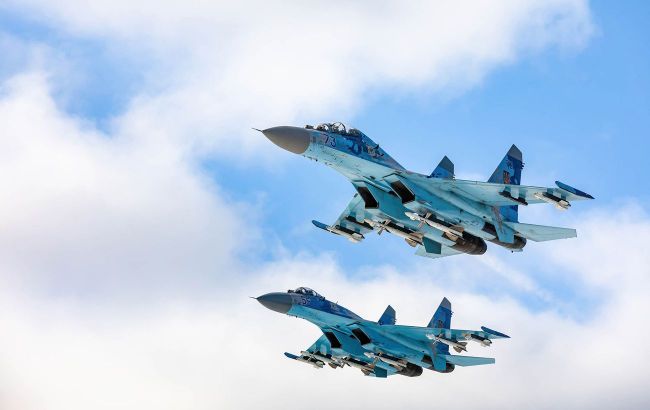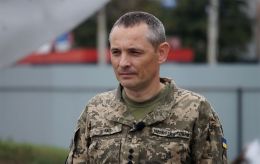Ukrainian aviation joins operation in Kursk region - Forbes
 A Ukrainian Su-27 fighter jet hits its first target in the Kursk region (photo: Getty Images)
A Ukrainian Su-27 fighter jet hits its first target in the Kursk region (photo: Getty Images)
Ukrainian Air Force aviation has conducted its first airstrike on Russian positions in the Kursk region using a fighter jet, reports Forbes.
It is reported that a Ukrainian Su-27 fighter jet struck a Russian command post in the village of Tetkino, located a few kilometers north of the front line. Notably, the attack was carried out by a Soviet-era fighter rather than the F-16s recently acquired by Ukraine.
Forbes notes that on Tuesday, the first videos appeared showing Ukrainian aircraft dropping American JDAM bombs on targets in the Kursk region. According to Forbes, Ukrainian forces have deployed a significant number of air defense batteries as well as electronic warfare systems capable of jamming radio signals and, in some cases, guiding precision bombs.
"With a big assist from explosive drones, the Ukrainian batteries have shot down several Russian helicopters. Firing back, Russian artillery damaged one Ukrainian Buk air-defense vehicle," the Forbes adds.
Strong Russian air defense
Forbes reports that Russian air defenses around Kursk are also very formidable. This explains why the mentioned Su-27 was observed flying only a few hundred feet above the battlefield after releasing glide bombs. Pilots on both sides are attempting to fly as low and as frequently as possible to avoid detection by enemy radars.
While both sides have deployed military aircraft over the invasion zone, Russia may be deploying more military aircraft. There is evidence of Russian bombings targeting both Ukrainian forces in the Kursk region and Ukrainian bases in the Sumy region.
"The only confirmed target of a Ukrainian bomb is that Russian command post in Tetkino. That is to say, it’s not clear the Ukrainians have extended their air power directly over the front line," Forbes notes.
According to Forbes, such actions would make sense. Despite the escalation of Ukrainian drone and missile strikes on Russian airbases in and around Kursk, the Russians still have a larger number of aircraft and bombs. The 85 F-16 fighters promised by Ukraine's European allies are arriving slowly and in small numbers.
Fewer planes, but we advance
Hans Petter Midttun, a non-resident fellow at the Center for Defense Strategies, noted that it is quite possible the Ukrainian Air Force now has only around 100 combat aircraft after losing several during Russian attacks on Ukrainian airbases this summer. According to him, the invasion will challenge the already stretched Ukrainian armed forces.
Before the full-scale invasion, Russia prepared about 300 aircraft for air attacks against Ukraine, capable of dropping up to 100 glide bombs per day. In contrast, the Ukrainian Air Force is likely dropping only a fraction of that number.
"It’s worth noting that, around the same time Su-27s were bombing Russian positions in Kursk, other Ukrainian jets were bombing three Russian-held towns in Kharkiv region around 100 miles east of the Kursk salient," Forbes reports.
However, despite the severe shortage of aircraft, bombs, and other heavy weaponry, Forbes notes that Ukraine's invasion shows no signs of slowing down.
"We are on the offensive. The aim is to stretch the positions of the enemy, to inflict maximum losses and to destabilize the situation in Russia, as they are unable to protect their own border," an unnamed Ukrainian official told Midtun.
Ukrainian Armed Forces' operation in the Kursk region
According to the General Staff, within the first week of the operation in the Kursk region, the Ukrainian Armed Forces gained control over 74 settlements.
The Institute for the Study of War reported the capture of 41 settlements and attributed the discrepancy in figures to their specific counting methodology.
Experts do not rule out that the Kursk breakthrough could accelerate Western approval for strikes on Russian rear targets with foreign-made weaponry.

